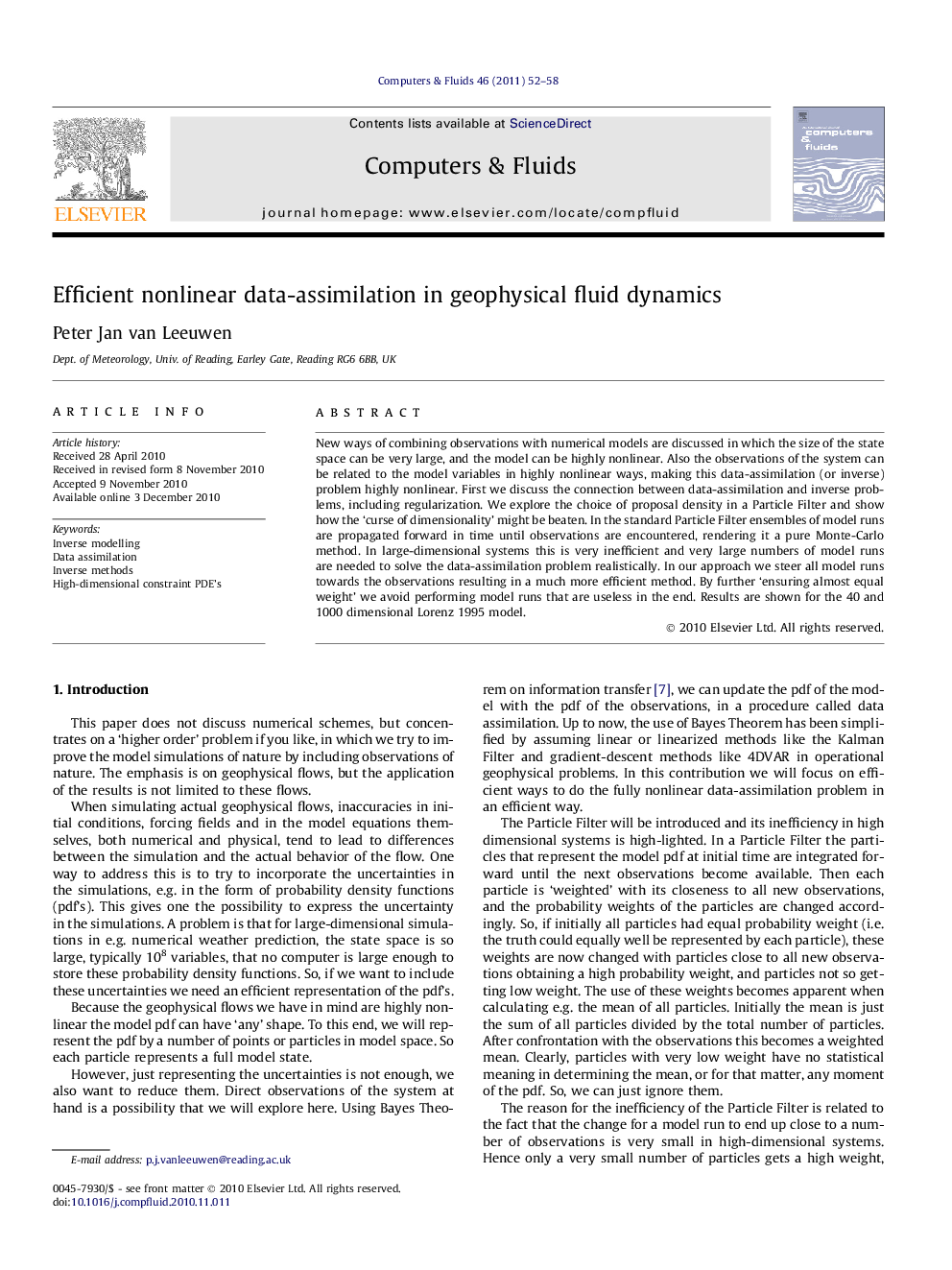| Article ID | Journal | Published Year | Pages | File Type |
|---|---|---|---|---|
| 762757 | Computers & Fluids | 2011 | 7 Pages |
New ways of combining observations with numerical models are discussed in which the size of the state space can be very large, and the model can be highly nonlinear. Also the observations of the system can be related to the model variables in highly nonlinear ways, making this data-assimilation (or inverse) problem highly nonlinear. First we discuss the connection between data-assimilation and inverse problems, including regularization. We explore the choice of proposal density in a Particle Filter and show how the ‘curse of dimensionality’ might be beaten. In the standard Particle Filter ensembles of model runs are propagated forward in time until observations are encountered, rendering it a pure Monte-Carlo method. In large-dimensional systems this is very inefficient and very large numbers of model runs are needed to solve the data-assimilation problem realistically. In our approach we steer all model runs towards the observations resulting in a much more efficient method. By further ‘ensuring almost equal weight’ we avoid performing model runs that are useless in the end. Results are shown for the 40 and 1000 dimensional Lorenz 1995 model.
